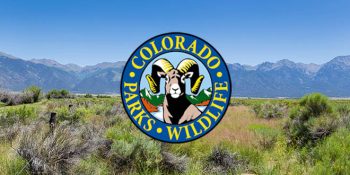DENVER – This Wednesday, January 15, is the open enrollment deadline for Coloradans to enroll in individual health insurance plans. The next few days are the last opportunity to enroll in coverage for 2020, unless someone experiences a special circumstance like losing their employer-based insurance, getting married, divorced or the birth of a child.
“Now is the time to sign up, get enrolled, and shop around to find health care savings. Health care premiums on the individual market are down by an average of 20%, and the savings are even greater on the Eastern Plains, the Western Slope and in Southern Colorado. I encourage Coloradans to take advantage of the historic premium reductions and enroll in a plan before Wednesday’s deadline,” said Governor Jared Polis.
The 2020 premiums have decreased across Colorado and in all levels of plans – bronze, silver and gold – thanks to the bipartisan Reinsurance program passed by lawmakers and signed by the Governor. Reinsurance is bringing real savings to real people. In his 2020 state of the state address, Governor Polis highlighted the story of a Summit County family of four who is saving upwards of $7,000 this year as a result of reinsurance and the Peak Health Alliance.
Colorado individual health insurance consumers can enroll with insurance agents, directly with the insurance companies or through our state’s exchange, Connect for Health Colorado. Contact Connect at 855-752-6749 or find in-person assistance through their statewide network of certified experts at connectforhealthco.com/person-help. In addition, Connect for Health offers tools such as the Quick Cost & Plan Finder that can help you check if you are eligible for financial assistance and find a plan that fits your needs.
Coverage for people enrolling now and through the Jan. 15 deadline will begin on Feb. 1. On average, people can find plans with premiums 20% cheaper than the 2019 plans and some people are finding plans as much as 35% cheaper than before.
Preliminary enrollment figures show that as of Dec. 18, over 173,000 people have signed up for individual coverage for 2020. This includes people who enrolled through Connect for Health Colorado and those who enrolled directly with an insurance company (also called enrolling “off-exchange”).
Open Enrollment for Individual Coverage – Deadline January 15

Still time to get health insurance coverage for 2020
DENVER – This Wednesday, January 15, is the open enrollment deadline for Coloradans to enroll in individual health insurance plans. The next few days are the last opportunity to enroll in coverage for 2020, unless someone experiences a special circumstance like losing their employer-based insurance, getting married, divorced or the birth of a child.
“Now is the time to sign up, get enrolled, and shop around to find health care savings. Health care premiums on the individual market are down by an average of 20%, and the savings are even greater on the Eastern Plains, the Western Slope and in Southern Colorado. I encourage Coloradans to take advantage of the historic premium reductions and enroll in a plan before Wednesday’s deadline,” said Governor Jared Polis.
The 2020 premiums have decreased across Colorado and in all levels of plans – bronze, silver and gold – thanks to the bipartisan Reinsurance program passed by lawmakers and signed by the Governor. Reinsurance is bringing real savings to real people. In his 2020 state of the state address, Governor Polis highlighted the story of a Summit County family of four who is saving upwards of $7,000 this year as a result of reinsurance and the Peak Health Alliance.
Colorado individual health insurance consumers can enroll with insurance agents, directly with the insurance companies or through our state’s exchange, Connect for Health Colorado. Contact Connect at 855-752-6749 or find in-person assistance through their statewide network of certified experts at connectforhealthco.com/person-help. In addition, Connect for Health offers tools such as the Quick Cost & Plan Finder that can help you check if you are eligible for financial assistance and find a plan that fits your needs.
Coverage for people enrolling now and through the Jan. 15 deadline will begin on Feb. 1. On average, people can find plans with premiums 20% cheaper than the 2019 plans and some people are finding plans as much as 35% cheaper than before.
Preliminary enrollment figures show that as of Dec. 18, over 173,000 people have signed up for individual coverage for 2020. This includes people who enrolled through Connect for Health Colorado and those who enrolled directly with an insurance company (also called enrolling “off-exchange”).
SPREAD THE NEWS
COMMENT, Like, Follow & SHARE @I70Scout
CURRENT EDITION
WEATHER & TRAFFIC PUZZLES RECENT NEWS ADVERTISE WITH US


